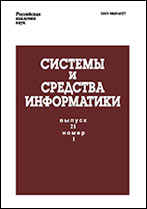|
Sequential self-timed cell characterization
Yu. A. Stepchenkov, Yu. G. Diachenko, N. V. Morozov, D. Yu. Stepchenkov, D. Yu. Diachenko
Institute of Informatics Problems, Federal Research Center "Computer Science and Control" of the Russian Academy of Sciences, 44-2 Vavilov Str., Moscow 119133, Russian Federation
Abstract:
Functional specificity of the self-timed circuits makes special
requirements to their characterization procedure. This procedure should take into
account a signal conditioning discipline for information and phase signals on base of
user defined attributes of the characterized cell's inputs and outputs. The paper
describes a technique of adjusting characterization process for sequential self-timed
cells. It is based on using vectors that set static values and transition direction for all
inputs and outputs. Algorithmization and implementation of the suggested approach
in new SAHIB characterization system version have increased its efficiency and
provided the valid characterization of all sequential cell types in the self-timed cell
library for 65-nanometer standard CMOS (complementary
metal-oxide-semiconductor)
process. Automatic introduction of the Verilog
constructions analyzing change order of all cell inputs and notifying their invalid
sequence into the sequential cell models during characterization procedure
accelerates and mitigates self-timed circuit design.
Keywords:
self-timed circuit, timing parameters, characterization, simulation, sequential cell, initial state.
Received: 07.08.2019
Citation:
Yu. A. Stepchenkov, Yu. G. Diachenko, N. V. Morozov, D. Yu. Stepchenkov, D. Yu. Diachenko, “Sequential self-timed cell characterization”, Sistemy i Sredstva Inform., 29:3 (2019), 104–113
Linking options:
https://www.mathnet.ru/eng/ssi658 https://www.mathnet.ru/eng/ssi/v29/i3/p104
|

| Statistics & downloads: |
| Abstract page: | 136 | | Full-text PDF : | 53 | | References: | 32 |
|




 Contact us:
Contact us: Terms of Use
Terms of Use
 Registration to the website
Registration to the website Logotypes
Logotypes








 Citation in format
Citation in format 